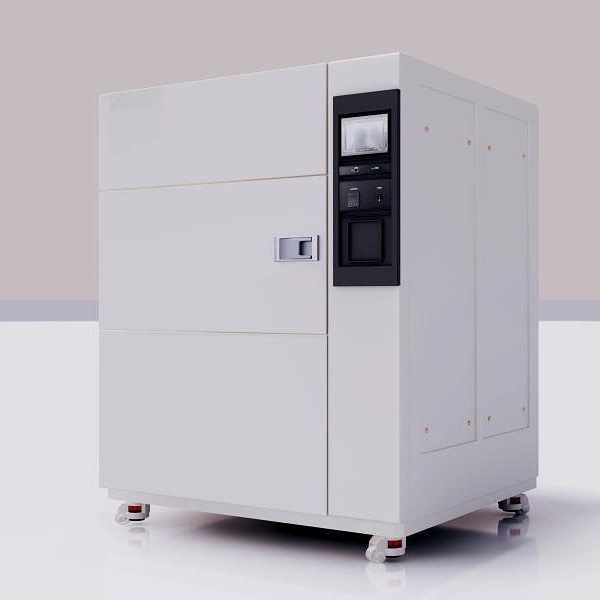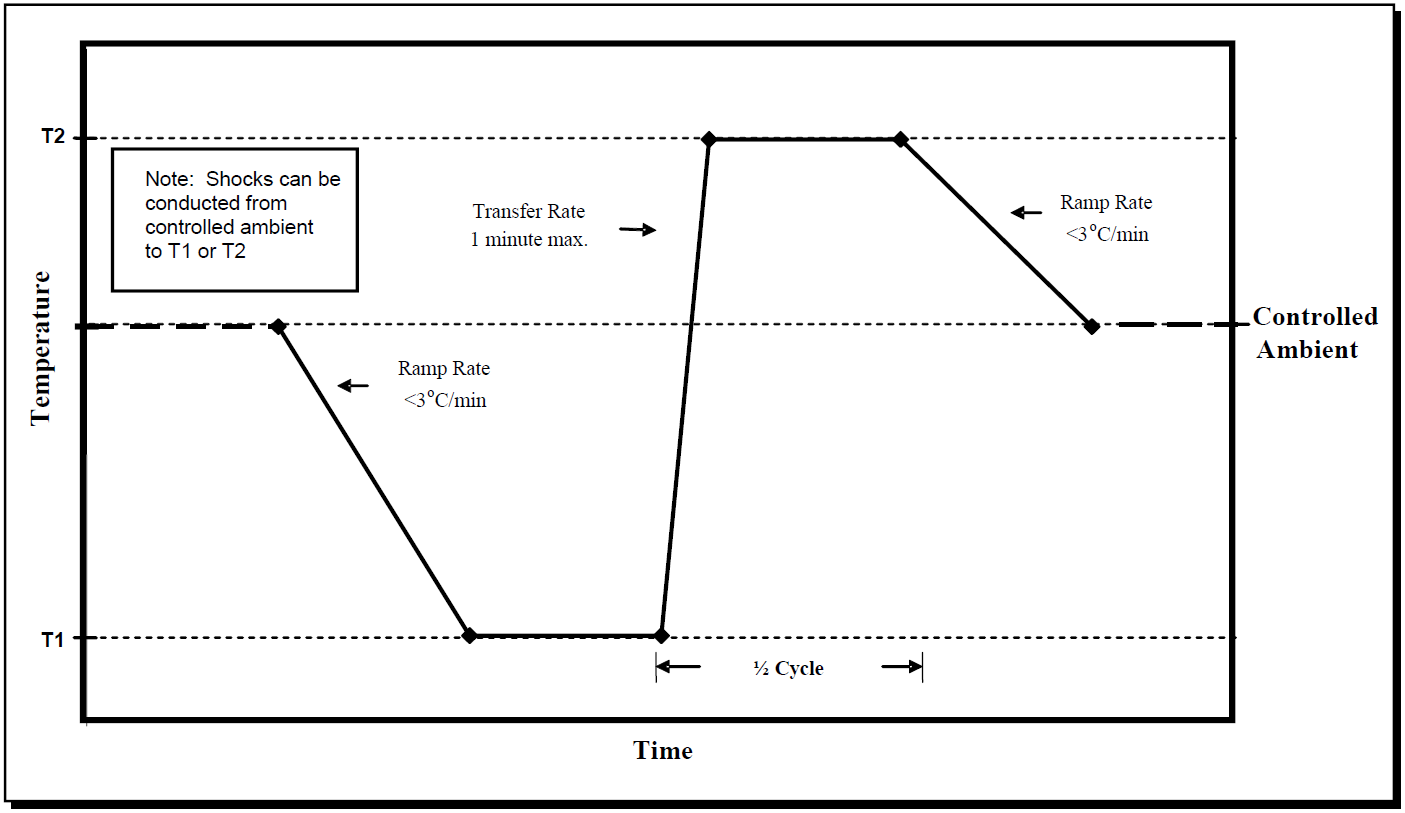Consumer and commercial products are expected to function properly and consistently within a wide range and variance of temperatures. The purpose of Thermal Shock testing is to measure a product’s resistance to failure from sudden extreme temperature changes over a short period of time. These tests are used to validate structural, mechanical, and electronic products, and are especially useful in the semiconductor industry where components undergo consistent temperature gradients.Rapidly cycling through extreme high and low temperatures leads to physical deformations such as micro-fractures and dislocations within component materials. Thermal shock testing refers to the unnaturally high temperature acceleration through experimental methods, while the real-world rate of change typically has a lower acceleration. By artificially increasing the acceleration for stress testing, the general lifespan can be solved for in a shorter period of time. This information is important to understand for having a clear expectation of a product to last for its use cases.These thermal fatigue tests are generally conducted within Thermal Shock Chambers. There are several types of chambers for different use cases: chamber size, temperature range, and ramp rate (temperature acceleration) are all factors to consider for testing a product. In addition to these specifications, the test chamber count also affects the method of experimentation. The physical properties and dimensions of the product determine which system to use: for example, PCBs or handheld devices can be tested with a single chamber, while a large mechanism or assembly would require a walk-in chamber.

One of our Nvirotest Solutions© thermal shock single chambers is the HCTS-230JTUS3 which utilizes a 227.5 L (8 ft3) chamber where the air temperature is raised or lowered by pumping in hot or cold air. The refrigeration system of this unit uses two Bitzer 20HP semi-hermetic compressors, a Bitzer water cooled condenser, and R404a and R23 refrigerant. The general temperature range is -65°C to +150°C. This falls within the Mil-Std 883G, 1010.8 (C) standard outlined below. The high temperature heat-up transition time is about 25 minutes and the low temperature cool-down transition time is about 70 minutes. The temperature undulation is approximately ±2.0°C, and uniformity ±3.0°C. This particular chamber is best suited for PCBs, SoCs, and other electronic components.Proper testing requires following industry standards to ensure safety and reliability. The specific standards for temperature cycling are given by the JEDEC Standard JESD22-A104E as well as the United States Mil-Stds 810G, 503.5, and 883G, 1010.8. JEDEC is an organization that develops open standards for the microelectronics industry with 3,000 volunteers from 300 companies. They are accredited by ANSI and their standards are adopted internationally. The United States Department of Defense (DoD) mandates the Military Standard Mil-Std as quality and reliability standards that tested products must meet to be eligible for use in military and aerospace applications.The Mil-Std 810G, 503.5 specifies the procedures for testing single cycle, multi-cycle, and half cycle thermal shocks. The chart below depicts the process for a single shock (half cycle).

The Mil-Std 883G, 1010.8 temperature ranges achieved by the HCTS-230JTUS3 thermal shock chamber are subcategories A, B, and C:Mil-Std 883G, 1010.8
Low Temperature (°C)High Temperature (°C)A-55 (+0, -10)+85 (+10, -0)B-55 (+0, -10)+125 (+15, -0)C-65 (+0, -10)+150 (+15, -0) More in-depth information regarding the Mil-Stds can be found in the source material linked below: Mil-Std 810G, 503.5Mil-Std 883G
Consumer and commercial products are expected to function properly and consistently within a wide range and variance of temperatures. The purpose of Thermal Shock testing is to measure a product’s resistance to failure from sudden extreme temperature changes over a short period of time. These tests are used to validate structural, mechanical, and electronic products, and are especially useful in the semiconductor industry where components undergo consistent temperature gradients.Rapidly cycling through extreme high and low temperatures leads to physical deformations such as micro-fractures and dislocations within component materials. Thermal shock testing refers to the unnaturally high temperature acceleration through experimental methods, while the real-world rate of change typically has a lower acceleration. By artificially increasing the acceleration for stress testing, the general lifespan can be solved for in a shorter period of time. This information is important to understand for having a clear expectation of a product to last for its use cases.These thermal fatigue tests are generally conducted within Thermal Shock Chambers. There are several types of chambers for different use cases: chamber size, temperature range, and ramp rate (temperature acceleration) are all factors to consider for testing a product. In addition to these specifications, the test chamber count also affects the method of experimentation. The physical properties and dimensions of the product determine which system to use: for example, PCBs or handheld devices can be tested with a single chamber, while a large mechanism or assembly would require a walk-in chamber.










